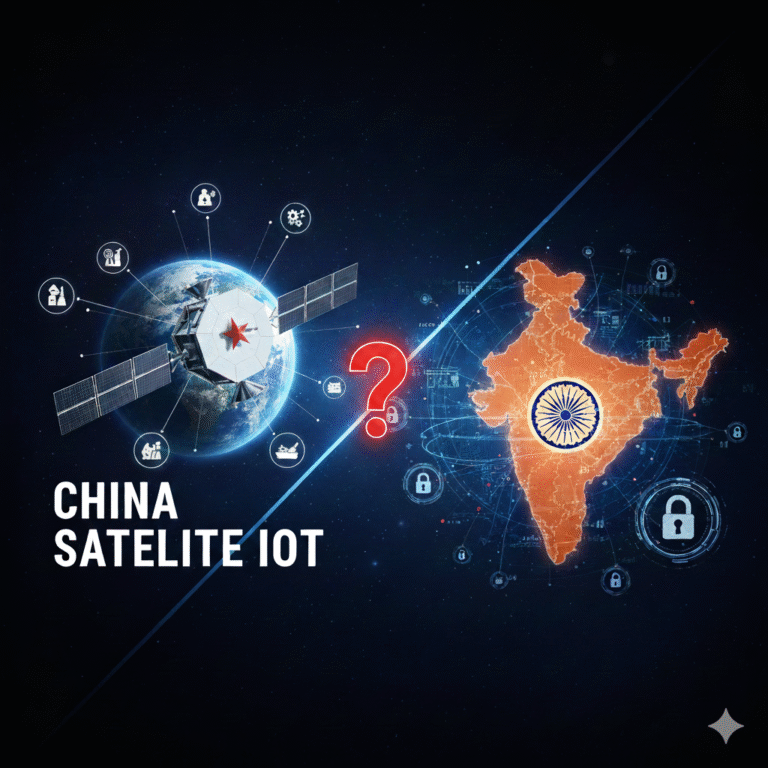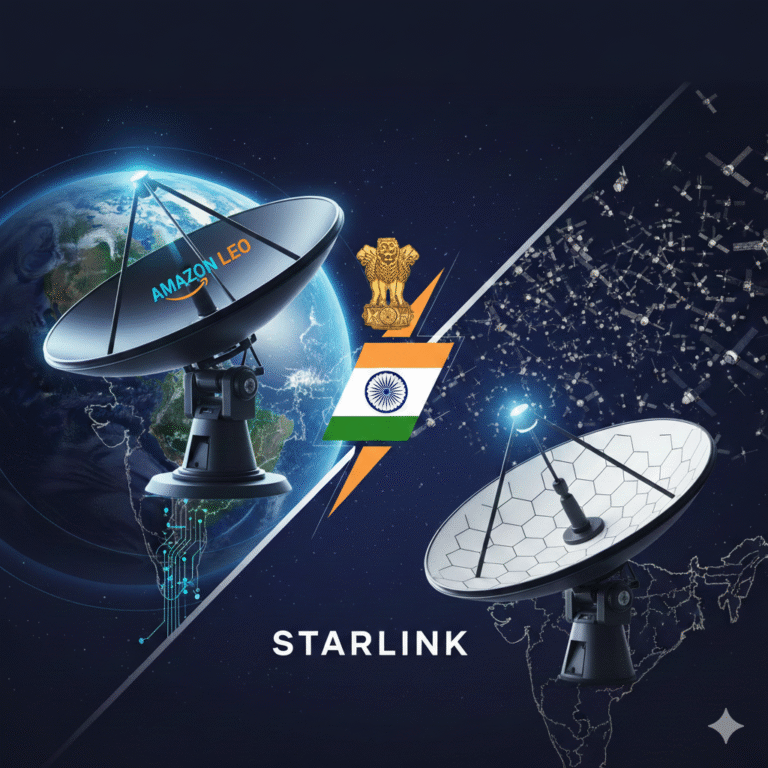
Key Highlights
- Geographic Death Penalty: Yale economist Ahmed Mushfiq Mobarak’s research proves “living in remote areas shouldn’t be a death sentence” – access barriers, not hesitancy, prevent healthcare utilization
- Sierra Leone Breakthrough: Mobile vaccination teams increased immunization rates from 9.5% to 30.2% within 48-72 hours at just $33 per person – 76% cheaper than comparable interventions
- India’s Rural Crisis: 65% of India’s population lives rurally while 70% of healthcare professionals concentrate in urban areas, creating massive access inequities
- Inverse Care Law: In India’s tribal areas, those with greatest healthcare needs face greatest access difficulties – only 0.6 beds per 1,000 people compared to WHO recommendations
- Technology Bridge: India’s eSanjeevani telemedicine service provided 276 million consultations, while mobile medical units demonstrate scalable solutions for last-mile delivery
The Revelation: Debunking the Hesitancy Myth
Ahmed Mushfiq Mobarak’s groundbreaking research published in Nature fundamentally challenges conventional wisdom about healthcare access in remote areas. His Sierra Leone study reveals that the real barrier to vaccination wasn’t “vaccine hesitancy” – a narrative pushed by pharmaceutical executives – but simple lack of access.
When COVID-19 vaccines became available, less than 30% of Africans received doses even 18 months after development, while over 80% of high-income populations were vaccinated. The pharmaceutical industry quickly blamed “vaccine hesitancy” in Africa, but Mobarak’s coordinated surveys across 10 countries in the Global South revealed a striking truth: residents of nearly all developing nations were MORE willing to take vaccines than Americans or Russians. pmc.ncbi.nlm.nih
The real constraint was geographic remoteness creating insurmountable barriers. In Sierra Leone, the average person needed 3.5 hours each way to reach the nearest vaccination center, with the trip costing approximately 10 days’ worth of wages. As Mobarak noted: “If you and I were under those conditions, we wouldn’t get a vaccine either.”
The Solution: Mobile Teams Transform Access

Working with Sierra Leone’s Ministry of Health and Concern Worldwide, Mobarak’s team implemented a cluster randomized controlled trial across 150 rural villages outside the national health clinic network. The intervention was elegantly simple: mobile vaccination teams bringing vaccines directly to villages.
The results were extraordinary:
Dramatic Uptake Increase: Vaccination rates surged from 9.5% to 30.2% in treatment villages within just 48-72 hours.
Spillover Effects: People from neighboring communities also came for vaccinations, more than doubling total numbers administered. nature
Cost Effectiveness: Implementation cost only $32-33 per person vaccinated – 76% cheaper than comparable interventions averaging $80. csae.ox
Minimal Resistance: Only 4 rejections occurred out of 100 villages approached.
Community Engagement: Village chiefs announced vaccination days, teams set up in central locations, and operations lasted 2-3 days per village with comprehensive social mobilization.
By December 2022, Sierra Leone achieved WHO’s global target of immunizing 70% of its adult population against COVID-19 – a remarkable turnaround demonstrating that access barriers, once removed, unlock tremendous healthcare demand.
India’s Parallel Crisis: The Geography of Health Inequity
India faces strikingly similar last-mile delivery challenges that perpetuate health inequities across its vast geography. Despite being home to 17% of the world’s population, India’s healthcare system exhibits a stark inverse care law: those with the greatest need for healthcare face the greatest difficulty accessing services.
The Rural-Urban Healthcare Divide
The statistics reveal a devastating disparity:
Population vs. Resources: Over 65% of India’s population lives in rural areas, yet 70% of healthcare professionals concentrate in urban regions.
Infrastructure Gaps: Many Primary Health Centers (PHCs) lack basic facilities – only 30% operate with all required infrastructure, and barely 45% function 24×7 as mandated.
Workforce Shortages: Over 65% of Community Health Center specialist posts remain vacant, while PHCs face a shortage of more than 27,000 doctors – a 200% increase over the last decade.
Geographic Penalties: Remote and tribal areas face 18% shortfall in PHCs, with nearly 8% of sub-centers and PHCs located in hard-to-reach areas with poor connectivity. pib.gov
The Tribal Healthcare Emergency

India’s 104 million tribal population faces particularly acute healthcare access challenges. Research across six states with 9,837 tribal participants reveals both progress and persistent barriers:
Distance Burden: Despite 78.8% reporting monthly government health worker visits, mean travel time to health facilities averages 34 minutes, with walking (21.88%) and auto-rickshaw/cab (20.23%) as primary transport modes.
Access Barriers: 17.45% cite distance as the primary reason for not using health services, while 4.57% report lack of trust in available care.
Service Delivery: While 60.32% are examined by doctors and 27.50% receive diagnostic tests, the quality and comprehensiveness of care often remain inadequate.
Cultural Challenges: Language barriers, cultural insensitivity, and lack of culturally appropriate services further compound access difficulties.
The Inverse Care Law: When Need Meets Neglect
Research specific to India’s context reveals a troubling pattern consistent with the global inverse care law. In Chhattisgarh, a case study exposes how the highest vulnerability districts have the highest insurance coverage but the lowest availability of empaneled hospitals – 3.4 per 100,000 compared to 8.2 in low-vulnerability districts.
This creates a vicious cycle:
Resource Allocation: Private hospitals distribute unequally, with higher availability in low-vulnerability districts that need them least.
Utilization Gaps: Claims per 100,000 enrolled in high-vulnerability districts are 3.5 times less than in low-vulnerability districts.
Policy Paradox: Equitable enrollment in health insurance schemes doesn’t automatically translate into equitable access when service availability remains concentrated in already well-served areas.
Quality Differential: A Lancet study placed Uttar Pradesh among five states where district hospitals offer only 1% of basic services required for comprehensive care.
Technology as the Great Equalizer
India has pioneered several technological solutions to address last-mile healthcare delivery challenges, offering scalable models for bridging geographic inequities.
eSanjeevani: National Telemedicine Success
India’s National Telemedicine Service, eSanjeevani, demonstrates the transformative potential of digital health:
Scale Achievement: Over 276 million consultations provided, with almost 300,000 daily consultations during peak periods. thelancet
Rural Penetration: With 42% of India’s 1 billion mobile connections in rural areas and 300 million smartphone users, the infrastructure exists for widespread telemedicine adoption.
COVID Response: Telemedicine became crucial during the pandemic, enabling continuity of care while minimizing infection risks.
Integration Potential: eSanjeevani integration with Health and Wellness Centers could dramatically expand specialist care access in remote areas.
Mobile Medical Units: Healthcare on Wheels

Mobile Medical Units (MMUs) represent another promising approach to last-mile delivery:
Service Portfolio: MMUs provide early disease identification, screening, referrals, follow-ups, and free medicines directly to remote communities.
Technology Integration: 100% technology-driven solutions manage deliveries with real-time tracking and cold chain management for temperature-sensitive medicines.
Cost Efficiency: By eliminating the need for patients to travel to facilities, MMUs reduce both healthcare system costs and patient burden.
Scalability: Digital health records, teleconsultation integration, and automated screening systems enable MMUs to serve larger populations efficiently.
Policy Lessons for India
Mobarak’s Sierra Leone success provides a practical blueprint for addressing India’s last-mile healthcare challenges through evidence-based interventions.
Immediate Implementation Strategies
Mobile Health Teams: Following the Sierra Leone model, India could deploy mobile vaccination and primary care teams to reach remote villages systematically. The ₹32-33 per person cost in Sierra Leone suggests high cost-effectiveness potential.
Community Engagement: Village-level mobilization through local leaders, chiefs, and religious figures proved crucial in Sierra Leone. India’s extensive ASHA (Accredited Social Health Activist) network provides similar community entry points.
Integrated Service Delivery: Sierra Leone researchers noted that bundling multiple maternal and child health interventions in the same visit would further reduce costs per person treated. India’s comprehensive primary healthcare approach aligns with this insight.
Time-Limited Campaigns: The 48-72 hour intensive approach creates urgency and maximizes community participation, avoiding the dilution effects of extended programs.
Systemic Health Sector Reforms
Vulnerability-Indexed Resource Allocation: Instead of equal distribution, resources should be allocated proportionate to geographic remoteness and health vulnerability. Chhattisgarh’s inverse care law demonstrates why neutral allocation perpetuates inequity.
Transportation Subsidies: Given that Sierra Leone’s intervention cost included significant transportation expenses, subsidizing patient transportation or providing mobile services could be more cost-effective than expecting patients to travel.
Quality Assurance: Research shows that trust deficits reduce public healthcare utilization, with citizens preferring private hospitals for perceived better quality. Mobile teams must maintain high service standards to build community confidence.
Last-Mile Delivery as Development Priority
For UPSC aspirants studying development administration, last-mile healthcare delivery represents a critical test of governance effectiveness and commitment to constitutional equality principles.
Constitutional and Policy Framework
Fundamental Rights: Article 21 (Right to Life) has been interpreted by the Supreme Court to include the right to health. Geographic barriers that prevent healthcare access potentially violate this fundamental right.
Directive Principles: Article 47 directs the state to improve public health and nutrition standards. Last-mile delivery failures represent clear policy implementation gaps.
National Health Policy 2017: Emphasizes Universal Health Coverage with equity as a core principle. The policy’s success depends critically on solving last-mile delivery challenges.
Federalism and Implementation Challenges
State vs. Central Responsibilities: Health being a state subject requires coordinated action between central policy frameworks and state implementation capacity. Sierra Leone’s success depended on Ministry of Health collaboration.
Capacity Variations: States with the greatest health needs often have the weakest administrative capacity to implement last-mile delivery programs. This creates a double disadvantage requiring targeted central support.
Resource Mobilization: Effective last-mile delivery requires sustained financing beyond pilot projects. The Sierra Leone intervention’s $33 per person cost provides a benchmark for budget allocation.
Innovation in Indian Healthcare: Learning from Success Stories
India has generated several indigenous innovations in last-mile healthcare delivery that complement international best practices.
Tribal Healthcare Innovations
HTN-AAROGYA Framework: Researchers in Jharkhand developed a comprehensive approach focusing on Accessible Awareness, Routine care, Outreach, Guidance, Yield, and evaluation for hypertension management in tribal areas.
Festival-Based Outreach: Home-based clinics during tribal festivals have shown promise in overcoming access barriers by meeting communities when and where they gather.
Community Health Worker Integration: Training Accredited Social Health Activists (ASHAs) in qualitative social science methods has improved understanding of local health-seeking behaviors.
Technology-Enabled Solutions
Digital Public Infrastructure: India’s UPI, Aadhaar, and digital identity systems provide the foundation for digital health record systems that can support mobile healthcare delivery.
Artificial Intelligence: AI-powered screening and diagnostic tools can enable community health workers to provide more sophisticated care during outreach visits.
Cold Chain Innovations: Solar-powered refrigerators and real-time temperature monitoring address vaccine storage challenges in remote areas lacking reliable electricity.
Economic Case for Last-Mile Investment
Cost-Effectiveness Analysis
Prevention vs. Treatment: The Sierra Leone study’s $33 per vaccination compares favorably with the costs of treating preventable diseases, which can run into thousands of dollars per patient.
Productivity Gains: Healthy populations are more economically productive, with reduced absenteeism, lower healthcare spending, and enhanced human capital development.
Health System Efficiency: Preventing severe cases through accessible primary care reduces pressure on tertiary hospitals, enabling them to focus on complex cases requiring specialized treatment.
Financing Mechanisms
National Health Mission: India’s NHM provides the institutional framework for scaling last-mile delivery interventions across states with performance-based funding.
Corporate Social Responsibility: Private sector engagement through CSR mandates can fund innovative last-mile delivery pilots while building public-private partnerships.
International Cooperation: Development partners and philanthropic organizations increasingly recognize last-mile delivery as a high-impact investment worthy of support.
Measuring Success: Indicators Beyond Coverage
Health Equity Metrics
Geographic Equity: Measuring variation in health service utilization across districts and sub-districts to identify persistent access gaps.
Time-Distance Analysis: Mapping travel times to health facilities using GIS technology to identify populations living beyond acceptable access thresholds.
Quality-Adjusted Coverage: Measuring not just service availability but service quality and patient satisfaction to ensure last-mile delivery meets standards.
System Performance Indicators
Response Time: Measuring how quickly mobile teams can be deployed to respond to disease outbreaks or health emergencies in remote areas.
Integration Effectiveness: Assessing how well mobile services connect with existing health infrastructure and referral systems.
Sustainability Metrics: Tracking the transition from donor-funded pilots to government-funded programs to ensure long-term viability.
Addressing Implementation Challenges
Operational Constraints
Workforce Development: Training and retaining healthcare workers willing to serve in remote areas requires comprehensive incentive packages including housing, education facilities for families, and career advancement opportunities.
Supply Chain Management: Ensuring reliable medicine and equipment supply to mobile teams operating in challenging geographic conditions requires robust logistics systems.
Cultural Sensitivity: Healthcare delivery must respect local customs, languages, and belief systems while maintaining medical standards and effectiveness.
Political Economy Factors
Elite Capture: Mobile healthcare resources must reach intended beneficiaries rather than being diverted to already well-served populations with greater political influence.
Sustainability Beyond Elections: Last-mile healthcare programs require long-term commitment that survives electoral cycles and political transitions.
Bureaucratic Coordination: Effective mobile healthcare requires coordination across departments (health, transport, communications, rural development) that often operate in silos.
The Path Forward: From Pilot to Scale
Immediate Actions
Evidence Generation: Conduct rigorous randomized controlled trials of mobile healthcare delivery in different Indian contexts (desert, mountain, forest, coastal) to understand context-specific effectiveness.
Policy Integration: Incorporate last-mile delivery explicitly into state health policies and district health plans with dedicated budget allocations and performance indicators.
Capacity Building: Train healthcare workers, administrators, and community leaders in mobile healthcare delivery best practices adapted to local conditions.
Medium-term Transformation
Infrastructure Investment: Develop transportation, communication, and cold chain infrastructure specifically designed to support mobile healthcare delivery.
Technology Integration: Deploy digital health tools, telemedicine platforms, and AI-powered diagnostic aids to enhance the effectiveness of mobile healthcare teams.
Partnership Development: Build sustainable partnerships between government, NGOs, private sector, and communities to share costs and responsibilities for last-mile delivery.
Long-term Vision
Universal Coverage: Achieve true universal health coverage where geographic location doesn’t determine health outcomes through comprehensive last-mile delivery systems.
Global Leadership: Position India as a global leader in last-mile healthcare delivery innovation by documenting, evaluating, and sharing successful models internationally.
Equity Achievement: Eliminate the inverse care law by ensuring those with the greatest health needs have the most accessible health services through targeted last-mile interventions.
Conclusion: From Death Sentence to Life Chance
Ahmed Mushfiq Mobarak’s title captures the fundamental moral challenge: “Living in remote areas shouldn’t be a death sentence.” His Sierra Leone research proves that when access barriers are systematically removed, health service utilization increases dramatically – not because people become less “hesitant,” but because they finally have a genuine choice.
India faces parallel challenges with even greater scale and complexity. With 65% of the population living in rural areas and persistent urban-rural healthcare divides, the country must urgently prioritize last-mile healthcare delivery as both a constitutional obligation and development necessity.
The solutions exist: mobile healthcare teams, telemedicine integration, community health worker programs, and technology-enabled service delivery. The evidence is clear: interventions like Sierra Leone’s mobile vaccination program deliver high impact at reasonable cost. The imperative is urgent: every day that passes without comprehensive last-mile delivery systems costs lives that could be saved.
For UPSC aspirants and policymakers, the lesson is straightforward: true universal health coverage requires moving beyond rhetoric to implementation of vulnerability-indexed, evidence-based last-mile delivery systems that ensure geographic location doesn’t determine life chances.
As Mobarak demonstrates, when governments, researchers, and communities collaborate systematically to address access barriers, dramatic improvements become possible even in the most challenging circumstances. The question isn’t whether last-mile healthcare delivery works – it’s whether India has the political will to implement it at scale.









+ There are no comments
Add yours